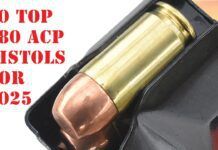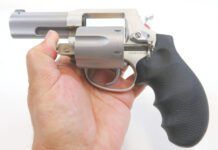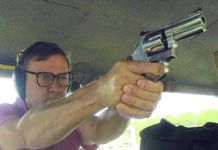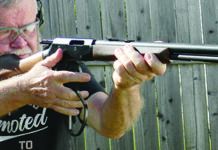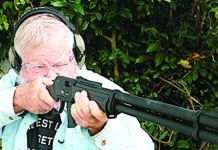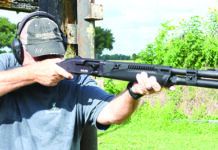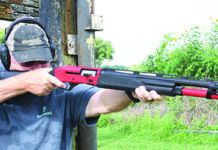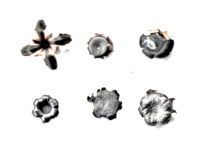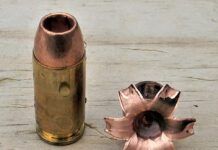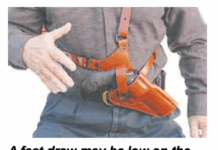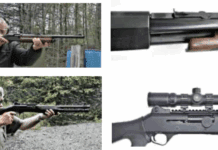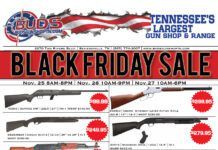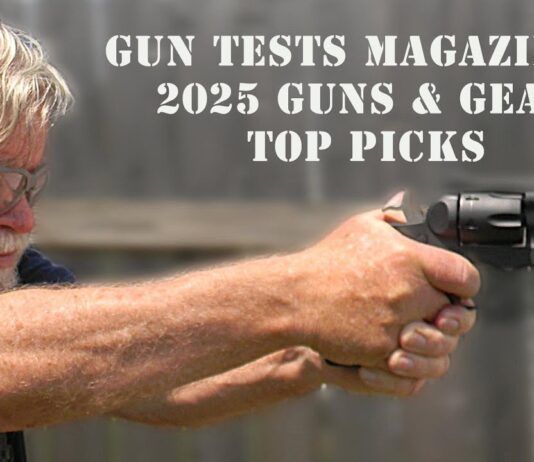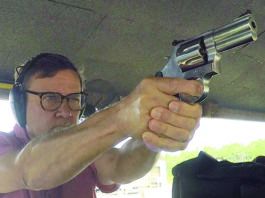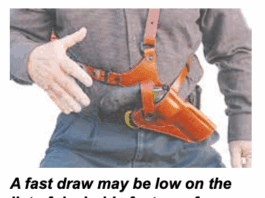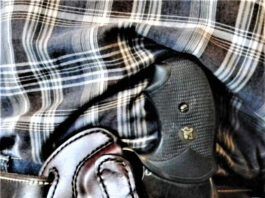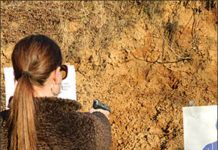Mako Group Becomes Sole USA Distributor of Meprolight Sights
Mako Group Becomes Sole USA Distributor of Meprolight Sights
SureFire DSF-Series Shotgun Forend WeaponLights Available
Customized Pistol Grips Available from Rio Grande
Bushnell IntroducesTwo New Fixed-Power Red-Dot Sights
Honeywell IntroducesHoward Leight Firmfit Earplugs
Qualification Done Right
Understanding the Not-So-Simple Drill Bit
ATI Introduces Fluted Aluminum Magazine Extensions
Bushnell Introduces Two New HiRise Sights For Flat Top AR-15 Style Rifles
Belt Slide Holsters – A Viable Choice For Concealed Carry?
The belt-slide holster design is basically a sleeve of material through which the carrier pushes the muzzle of the handgun, leaving the nose of the sidearm and the grip uncovered and the middle of the gun secured by the sleeve, aka the slide. Many criticize the design because it doesn't protect the muzzle or front sight, the gun can be pushed up when the user sits, the gun can be noisy when it hits against chairs or other hard objects, and the carry arm can be unsecure if the slide isn't snug on the frame and slide.
Despite these worries, belt-slide holsters are among the most popular holster types. Some view them as convenient for range use and carrying the handgun to the range and back and little more. Others feel that the belt-slide holster is a good choice for concealed carry. As is often the case, the rule is that the belt slide only works if you use a good example. The thin suede-leather or fabric types just do not make the grade except for range use and even then, they do not properly present the handgun for any type of draw angle. The draw angle is derived from the necessary gap between the handle of the handgun and holster and the torso as well. The handle of the handgun must be presented in such as way that the hand may grasp the grip and draw into the target. If the holster does not allow a fast presentation, then the handgun must be partially drawn with the fingertips to facilitate a draw. This is slow and fumble prone.
The belt slide was once almost universal among trainers, as they found it an excellent holster for general range use. They ended up using it for concealment under a light shirt or vest. There are a number of impressions of the belt slide that are not always accurate. It has been noted that the belt slide may be worn without the gun and it doesn't look like a holster. We fail to see the advantage of wearing a holster without a gun, recognized or not, but rather see a disadvantage. If anyone does recognize the belt slide as a holster, then they will quickly realize you are not armed. The better type of belt-slide holster is clearly molded to the outline of a gun. It is unmistakably a holster, not a tobacco pouch.
As noted above, a persistent criticism of the belt slide is that with the muzzle and much of the slide exposed, the handgun may be levered out of the holster if the muzzle contacts a chair when the user sits. If any holster meets the edge of the chair, the holster will be levered up against the body. If a long-barrel handgun is used in a belt slide, there is some chance of the gun being pushed up, but it depends upon the retention involved. The handgun may be levered out if the handle meets the chair as well as the muzzle meeting the chair. You really need to be aware you are wearing a gun!
As for the balance of speed and retention, the speed of the type cannot be disputed; it was the retention that worried us. The belt-slide holsters tested proved to be very fast on the draw. The better examples featured good retention for a minimum of leather. For use under a light jacket with a short-barrel handgun, these holsters have merit. The problem of positioning the handle away from the body to allow a good sharp draw is solved to an extent by some of the holsters, and the draw angle makes for good speed in others.
Gun Tests recently compared several of belt-slide designs to assess whether they are secure enough for us to recommend for everyday carry, and whether their minimalist form offers any advantages in comfort over other styles. We consider them piece by piece below:


